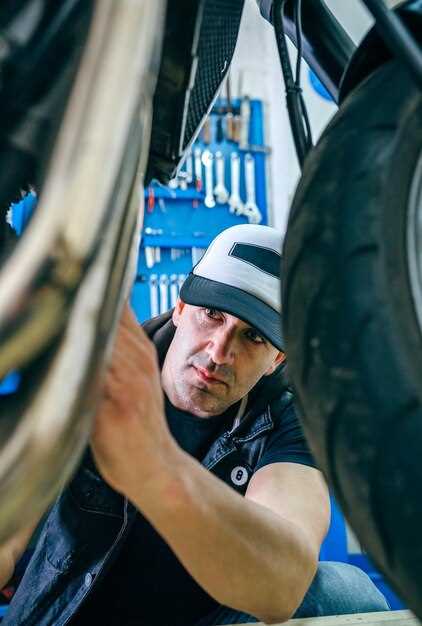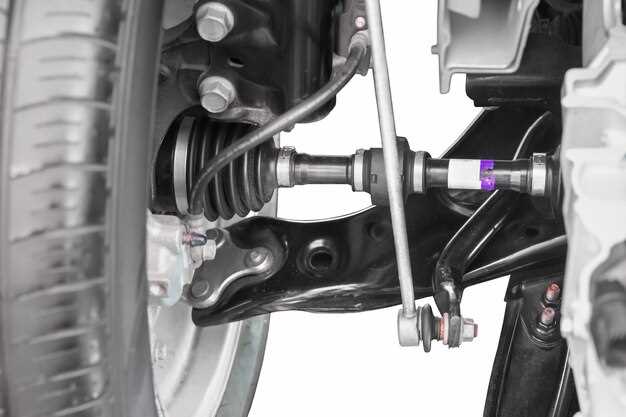
In the realm of motorsport, the performance of a race car is heavily influenced by its suspension system. A well-tuned suspension not only enhances the vehicle’s stability but also ensures optimal tire contact with the track, allowing for better grip and handling. Understanding the intricate dynamics of suspension setups is crucial for any serious racer aiming to maximize their vehicle’s potential.
Setting up a race car’s suspension system involves a careful balance of various components, including springs, dampers, and anti-roll bars. Each element plays a vital role in determining how the car behaves under different conditions and directly impacts overall performance. Due to the unique challenges presented by various tracks, from smooth asphalt to bumpy circuits, customizing the suspension setup becomes essential for achieving the best results in any given environment.
Whether you’re a seasoned driver or a newcomer to the racing scene, this guide aims to provide comprehensive insights into the process of setting up your race car’s suspension. We will explore fundamental concepts, key adjustments, and practical tips to help you enhance your vehicle’s performance on the track. With the right knowledge and tools, you can fine-tune your suspension to meet the demands of competitive racing.
Selecting the Right Components for Your Suspension Setup

Choosing the appropriate components for your race car’s suspension system is crucial for optimizing performance on the track. The right choices in tuning can significantly affect handling, stability, and overall driving experience. Here are the key components to consider:
1. Shocks and Struts: These are essential for controlling the movement of your car’s suspension. Adjustable shocks allow for fine-tuning the damping rates, enabling better handling characteristics tailored to different track conditions. Consider options like coilovers that offer both height and damping adjustments.
2. Springs: The spring rates determine how much weight the suspension can support and how it reacts to bumps and dips on the track. Selecting the right spring stiffness can drastically influence cornering grip and ride quality. Aim for a balanced setup that complements your shock absorbers for optimal performance.
3. Sway Bars: Upgrading to larger sway bars can minimize body roll during cornering, enhancing stability and responsiveness. They help maintain contact between the tires and the track, leading to increased grip. Tuning these components allows adjustments based on personal preferences and specific racing conditions.
4. Control Arms: Performance control arms can improve camber and toe angles, ensuring that the tires maintain optimal contact with the track during dynamic movements. Adjustable options enable fine-tuning for different tracks, accommodating various driving styles and conditions.
5. Alignment Components: Proper alignment is essential for maximizing tire performance and longevity. Invest in adjustable alignment kits that allow for precise tuning of camber, caster, and toe settings, which is vital for achieving ideal handling characteristics on the track.
6. Tires: The right tires can complement your suspension setup and enhance grip levels significantly. Choose tires based on the track surface and conditions, focusing on factors such as tread pattern and compound, to ensure they work harmoniously with your suspension tuning.
In summary, select each component of your suspension system with careful consideration of how it affects performance. Remember that the goal is to create a cohesive setup that enhances your car’s handling and makes you competitive on the track.
Adjusting Camber and Toe for Optimal Track Performance

Properly adjusting camber and toe settings is crucial for maximizing track performance in race cars. Camber refers to the angle of the wheels in relation to the vertical axis of the vehicle. When the top of the wheel leans inward, it is known as negative camber. This setup enhances grip during cornering, allowing the tires to maintain better contact with the track surface. However, excessive negative camber can lead to uneven tire wear and reduced straight-line stability.
Toe, on the other hand, describes the angle of the wheels in relation to the vehicle’s centerline. A toe-in setting means the front of the wheels is closer together than the rear, while toe-out means they are farther apart. Adjusting toe settings influences the car’s responsiveness and stability. A slight toe-out can improve cornering agility, but too much can lead to instability and increased tire wear.
To achieve optimal suspension performance on the track, a balanced approach to camber and toe is necessary. Start by determining the specific requirements of the track and the vehicle. For tight and twisty circuits, a more aggressive negative camber and a touch of toe-out may be beneficial. Conversely, on high-speed tracks, a more neutral setup with less camber and minimal toe adjustments may enhance straight-line performance.
Testing different configurations during practice sessions will allow drivers and engineers to fine-tune these settings. Data collected from tire temperatures and wear patterns provides essential feedback. This iterative process ensures that the suspension setup not only accommodates the specific track conditions but also maximizes overall performance. By methodically adjusting camber and toe, teams can achieve improved handling characteristics and increased lap times, leading to better results on race day.
Tuning Dampers and Springs for Specific Track Conditions
Tuning the dampers and springs of a race car is essential for optimizing performance on various track conditions. Each track presents unique challenges, including surface irregularities, elevation changes, and varying weather conditions. Adjusting the suspension system allows drivers to maintain control, improve grip, and enhance overall stability during a race.
For a smooth, high-speed circuit, softer spring rates may be beneficial. This configuration allows the car to absorb bumps and maintain traction on corner exits. Conversely, on a bumpy or uneven track, stiffer springs can prevent excessive body roll and provide more direct feedback from the tires, aiding in precise handling.
Dampers, or shock absorbers, play a critical role in controlling the rate at which the suspension moves. On tracks with a lot of undulation, adjusting the rebound and compression settings can help in managing the car’s contact with the ground. A faster rebound is often useful on smoother surfaces to help the car settle quickly after bumps, while slower rebound settings may be appropriate for rougher tracks to allow for better traction recovery.
Additionally, tuning both dampers and springs for temperature fluctuations can significantly impact lap times. On hotter days, softening the setup may prevent tires from overheating, while on cooler days, a firmer setup might help maintain optimal tire performance. Therefore, it is important to evaluate the track conditions before making adjustments to ensure the setup complements the expected performance outcomes.
Ultimately, the key to successful tuning lies in experimentation and data collection. It is advised to conduct practice runs to assess how each adjustment affects the car’s handling and overall performance. By closely monitoring tire wear, lap times, and driver feedback during these sessions, you can fine-tune your suspension system effectively for specific track conditions.



